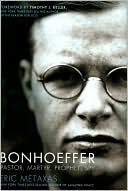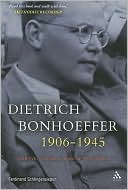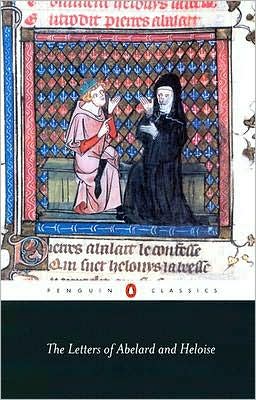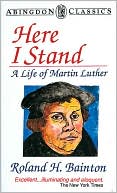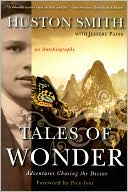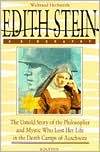Soren Kierkegaard: A Biography
"The day will come when not only my writings, but precisely my life—the intriguing secret of all the machinery—will be studied and studied." Søren Kierkegaard's remarkable combination of genius and peculiarity made this a fair if arrogant prediction. But Kierkegaard's life has been notoriously hard to study, so complex was the web of fact and fiction in his work. Joakim Garff's biography of Kierkegaard is thus a landmark achievement. A seamless blend of history, philosophy, and psychological...
Search in google:
"The day will come when not only my writings, but precisely my life--the intriguing secret of all the machinery--will be studied and studied." Søren Kierkegaard's remarkable combination of genius and peculiarity made this a fair if arrogant prediction. But Kierkegaard's life has been notoriously hard to study, so complex was the web of fact and fiction in his work. Joakim Garff's biography of Kierkegaard is thus a landmark achievement. A seamless blend of history, philosophy, and psychological insight, all conveyed with novelistic verve, this is the most comprehensive and penetrating account yet written of the life and works of the enigmatic Dane who changed the course of intellectual history. Garff portrays Kierkegaard not as the all-controlling impresario behind some of the most important works of modern philosophy and religious thought--books credited with founding existentialism and prefiguring postmodernism--but rather as a man whose writings came to control him. Kierkegaard saw himself as a vessel for his writings, a tool in the hand of God, and eventually as a martyr singled out to call for the end of "Christendom." Garff explores the events and relationships that formed Kierkegaard, including his guilt-ridden relationship with his father, his rivalry with his brother, and his famously tortured relationship with his fiancée Regine Olsen. He recreates the squalor and splendor of Golden Age Copenhagen and the intellectual milieu in which Kierkegaard found himself increasingly embattled and mercilessly caricatured. Acclaimed as a major cultural event on its publication in Denmark in 2000, this book, here presented in an exceptionally crisp and elegant translation,will be the definitive account of Kierkegaard's life for years to come. Publishers Weekly This is the second major work on Kierkegaard to appear in recent years; Alastair Hannay's intellectual portrait Kierkegaard: A Biography approaches the religious philosopher's life and work in a thematic fashion, discerning behind the veils of Kierkegaard's pseudonymous writings his anxieties and hopes, failures and successes. Garff, associate professor at the S ren Kierkegaard Research Center at the University of Copenhagen, proceeds very differently in this biography, portraying a philosopher whose daily life formed the crucible in which his landmark works were written. Drawing not simply on Kierkegaard's most famous writings, Garff also examines in microscopic fashion the minute details of the Dane's life year-by-year from his birth to his death. Garff uses journals, letters, gossip and family conversations to present the portrait of an intense young man whose study of the philosophy and literature of his day turned him into both a romantic and an anti-romantic, a Christian and a rebel against Christendom. For example, Garff points out that Goethe's Faust heavily influenced the young Kierkegaard, as did his participation in a circle of friends who discussed romantic literature. Although some will accuse Garff of revealing salacious details of the philosopher's life-as in the chapters on Kierkegaard's relationship with his fiancEe Regine Olsen-this monumental and magisterial biography offers fresh glimpses into the sometimes-tortured life and work of this true philosophical genius. (Feb.) Copyright 2004 Reed Business Information.
Søren Kierkegaard\ A Biography \ \ By Joakim Garff \ Princeton University Press\ Princeton University Press\ All right reserved.\ ISBN: 0-691-12788-3 \ \ \ Chapter One\ 1813-1834 \ KIRKKEGAARD, Kirkegaard, Kiersgaard, Kjerkegaard, Kirckegaard, Kerkegaard, Kierckegaard, Kierkegaard.\ The parish registers provide plenty of testimony that the name is a tricky and a volatile one. It of course has something to do with a churchyard [Danish: kirkegaard, "churchyard," usually in the sense of "cemetery"], but not in the usual sense. The name in fact stems from a couple of farms located next to the church in the village of Sædding in the middle of the Jutland heath, about a dozen miles southeast of Ringkøbing. In common parlance the two farms were termed "churchyards" because of their close proximity to the church. Michael was born on one of these farms on December 12, 1756, the son of tenant farmer Peder Christensen Kierkegaard, who had taken his farm's name as his surname in order to emphasize that this was where he and his family were from. In the beginning the normal spelling was simply "Kirkegaard," but after a time it evolved into "Kierkegaard," and this spelling perhaps contains a faint echo of how the name sounded in the dialect of Jutland.\ Michael was the fourth child in a family that fourteen years later finally came to include nine children. The heath was a stingy provider and poverty gnawedat the family, so after several difficult years as a shepherd boy, eleven-year-old Michael left the farm of his forebears. In that district the west wind forces the trees to lean longingly toward the east, and Michael followed their lead. Accompanied by a sheep dealer from the town of Lem, he set out for the Copenhagen of King Christian VII, where his mother's brother, Niels Andersen Seding, who had a dry-goods shop in a cellar on Østergade, took him on as an apprentice. At first Michael served as an errand boy, then as a shop assistant, and just before Christmas in 1780 he was granted his own business license and could then establish an independent firm. The surviving account books indicate that Kierkegaard's selection of wares included lisle stockings, woven caps, leather gloves from the Jutland town of Randers, and various goods from Iceland, all of which he sold on short road trips to the northern Zealand towns of Hillerød and Elsinore. The energetic businessman must have learned how to spin gold from these fuzzy wares because by age twenty-nine he was able, with his business partner Mads Røyen, to purchase the building at 31 Købmagergade. Røyen moved into the building, while Kierkegaard himself settled in number 43, where he opened his own business in "Glazier Clausen's Cellar."\ Not only was his shop located partly underground but his methods were also a bit shady. The business had hardly got off the ground before the city's silk and clothing merchants reported Kierkegaard and other wool dealers from Jutland to the master of their guild. The resulting raid on these businesses uncovered French linens and silk ribbons. Jutland wool dealers were not permitted to deal in such fine goods; therefore the master of the guild imposed severe fines upon the illegal importers. In turn the importers complained to the authorities that the legal regulations governing the trade had become so complex that no one could figure them out. The complaint hit its mark, and pursuant to a resolution of July 30, 1787, hosiers were permitted to trade in all sorts of cottage-industry woolen and linen goods, plus Danish felt and swanskin (a tightly woven, heavy flannel, teased only on one side). The following year Kierkegaard also received permission to trade in Chinese goods and West Indian wares: sugar, cane syrup, and coffee beans. Nonetheless, he pressed his case all the way to the Supreme Court, which found in his favor, and he was thereafter permitted to deal in such luxury articles as cottons and silks. The Jutland wool dealers had won the battle against the silken Copenhageners.\ The economy was booming and Michael Kierkegaard was not one to miss an opportunity. He invested his money in various properties on Købmagergade, Peter Hvitfeldtsstræde, Kalveboderne, Sankt Pedersstræde, Knabrostræde, and Helsingørgade; miraculously, he suffered no losses from the great fire which ravaged Copenhagen in 1795. The following year he inherited the estate of his mother's well-to-do brother and bought a piece of property in Sædding on which he had a fine half-timbered home built for his elderly parents and three of his younger siblings, Karen, Sidsel Marie, and Peder. The house was made of oak and painted red, so everyone could see that Michael had done well, over there in the capital city. He himself never saw Sædding again, but he did correspond with his sister Else, who had been born the year he had left home.\ During his first years in Copenhagen, Michael Kierkegaard's circle of friends and associates consisted primarily of fellow immigrants from Jutland who were employed in the same field. It was therefore no surprise to anyone when Michael married Røyen's sister, Kirstine Nielsdatter, on May 2, 1794. People thought it was about time, as Michael was by then thirty-eight years old and Kirstine only a year younger. With 568 rixdollars of her own money, Kirstine was a good match, but we have no idea how the two felt about one another-the registry of marriages merely listed the bare facts: "Michael Peter Kiærsgaard, hosier, and Kirstine Røyen, copulated on May 2 in Holy Spirit Church." The marriage was childless and lasted not quite two years. Kirstine died of pneumonia on March 23, 1796, and was buried in Assistens Cemetery three days later.\ Less than a year later Michael entrusted his flourishing business to his cousin Michael Andersen Kierkegaard and to Christen Agerskov, a nephew of his former father-in-law. This decision caused general surprise among his colleagues and acquaintances, for although Michael had occasionally complained of various maladies, people thought it was just hypochondria as there was nothing physically wrong with him. But even if his motives for transferring his business are unknown, the move was part of a momentous episode in the life of the enterprising businessman: Heedless of all plan or principle, he had impregnated his serving maid, Ane Sørensdatter Lund, whom he consequently felt obliged to marry. Even though the ordinance, dating from 1724, that required a year of mourning before remarriage applied only to widows (widowers had to wait a mere three months), Kierkegaard's blunder was more than an embarrassing mistake, it was a potentially costly one as well. The marriage contract he submitted to his attorney Andreas Hyllested on March 10, 1797, made it clear that the couple would not cohabit. In the event of the death of the husband, the widow would inherit the household goods and two hundred rixdollars a year and would also receive an inheritance of two thousand rixdollars to be set aside for any possible children. The document stated further: "Should the unexpected event transpire that the temperaments of the couple show themselves to be incompatible, and it may be granted us to live separately, my future wife will receive her wearing apparel and her linens; in addition to this I will give her a one-time payment of three hundred rixdollars for the purchase of necessary household goods as well as an annual payment of one hundred rixdollars as long as she lives." It was further emphasized that should such an occasion arise, the children would reside with their father after attaining the age of three.\ Attorney Hyllested refused to endorse the marriage contract. Not only were the husband's economic circumstances so glaringly superior to the terms offered to the wife and children, but it was unusual for a marriage contract to contain so many detailed provisions concerning divorce prior to entering into the marriage that Kierkegaard was asked to submit a new and less niggardly version. Kierkegaard deferred to his attorney, and the new papers were signed, whereupon the somewhat perplexed serving girl, who was by then four months pregnant, could promise her lord eternal fidelity in a quiet home wedding that was recorded in the marriage registry book with these affectionate words: "Widower Michael Kiersgaard, hosier, and Miss Ane Sørensd. Lund, copulated April 26 at Great Kiøbmagergade."\ Ane had been born June 18, 1768, as the youngest daughter of Maren Larsdatter and her husband Søren Jensen Lund, who was said to have been a "cheerful and jocular" man, from Brandlund in central Jutland. The family owned a cow and four sheep and were further endowed with two sons and four daughters, of whom the first was named Mette and the remaining three were named Ane, Ane, and Ane. This choice of names could give rise to some confusion, so the youngest was simply called "little Ane." After she was confirmed she went off to Copenhagen to work as a servant in the home of her brother, Lars Sørensen Lund, who had married the widow of a distiller and was thus also wedded to a distillery situated on Landemærket in Copenhagen. The conditions there were so terrible, however, that Ane soon left to work instead for Mads Røyen, whose service she then left in 1794 to work in the household of the newly married Michael Kierkegaard. After this point, Ane does not seem to have had much connection with her own family. Although her brother Lars was one of the godparents when her first daughter was baptized, her second daughter's baptismal party two years later was of a better class, and her brother the distiller was not among them. To judge from the scanty sources available, she was a pleasant, chubby little woman with an even and cheerful temperament. She appears to have been unable to write; when she signed public documents, someone had to guide her hand. Perhaps she could read a bit, but the reading matter she owned was not particularly demanding. Two of the very few volumes in her possession were Hagen's Historic Hymns and Rhymes for the Instruction of Children and Lindberg's Zion's Harp: A Christmas Present to the Christian Congregation, containing hymns by Kingo, Brorson, Ingemann, Grundtvig, Lindberg himself, and others. Her unproblematic spirit has not inspired any literary or poetic portrayals and perhaps can only be glimpsed here and there in Søren Kierkegaard's writings, where a housewife is depicted as a useful, quiet factotum in her husband's home. In his journals, Søren Aabye did not mention her by name one single time, and he never dedicated to her anything he ever wrote-not even an edifying discourse.\ Ane and Michael were thus in many respects an odd couple, but as time went on they probably learned to love one another. And at any rate they comported themselves like proper married folk. Three girls came along in the course of the first five years: Maren Kirstine on September 7, 1797; Nicoline Christine on October 25, 1799; and Petrea Severine (sharing a birthday with her eldest sister) on September 7, 1801. And when the paterfamilias wrote his will in 1802, he was far more generous than he had been at the time of the marriage contract. True, mention is still made of the consequences of divorce ("which God forbid"), but were this to happen Ane was now guaranteed twice as much annually as previously, while if the husband were to die she would now inherit one-third of his fortune, with the remainder divided among the children. In that same year Kierkegaard bought two houses in Hillerød with his former brother-in-law Mads Røyen. The names of the properties give an idea of their proportions: Røyen took up residence in "Peter's Castle," while the Kierkegaard family moved into "The Palace Inn," which had a splendid garden that inclined down to a lake. When the first boy, Peter Christian, came into the world on July 6, 1805, the family moved back to Copenhagen and settled into an apartment on Østergade, where Ane became pregnant with another son, Søren Michael, who was born March 23, 1807. Then, after Niels Andreas made his entrée on April 30, 1809, the family moved in the late summer of that year to a house on Nytorv located between the corner house at Frederiksberggade and the building that served both as a courthouse and as the city hall. The house at 2 Nytorv provided the backdrop for the Kierkegaard family for almost forty years. This was where they lived and died.\ And this was where Søren Aabye Kierkegaard's life had one of its many beginnings.\ The Little Fork\ Michael Kierkegaard was fifty-six and Ane was forty-five when their seventh child entered the world on Wednesday, May 5, 1813, so it was a well-experienced married couple who held their late-born child over the baptismal font on Thursday, June 3, at a private baptismal service in Holy Spirit Church. The family pastor, resident curate J.E.G. Bull, blessed the former serving girl's youngest son and baptized him Søren Aabye Kierkegaard-Søren, just like his mother's merry father, and Aabye after a recently deceased distant relative whose widow, Abelone Aabye, was a member of the baptismal party.\ Michael, a merchant, could look back upon some turbulent years. King Frederick VI had joined Napoleon in a doomed alliance against the English, who bombarded Copenhagen mercilessly in September 1807 and transformed large areas near Nytorv into ghost towns. In October of the same year, the English sailed out of the harbor with the captured Danish fleet, and an era in the history of Danish trade and navigation ended. The country was short of money, so Finance Minister Ernst Schimmelman set the printing presses at full speed, putting into circulation more and more banknotes for which there was no backing. Exactly four months before Søren Aabye's birth, the government decided that the so-called currency notes, which could be redeemed for hard silver, would be replaced by notes issued by the National Bank, worth only one-sixth of the face value of the original notes. State bankruptcy had arrived. Shares, mortgages, promissory notes, and other financial paper served as little more than proof of the bankruptcy of those who held them. And between 1814 (when Denmark was forced to cede Norway) and 1820, 248 firms in Copenhagen went broke, an average of about a firm every week.\ The so-called royal obligations were the only financial instruments that escaped the drastic devaluation, and this was precisely where Michael Kierkegaard had placed his money. He had entrusted the management of his business to others, but he had not turned his back on the world of finance. In 1808, as part of a patriotic fund drive, Kierkegaard and his relatives paid out of their own pockets for the construction of a gunboat, and when his cousin Anders Andersen Kierkegaard's silk and textile firm, Kierkegaard, Aabye, and Co. went bankrupt in 1820, Michael undertook extensive damage control, writing off no less than eleven thousand rixdollars of debt owed him by the firm.\ Although he was still described as a stocking dealer, hosier, or merely shopkeeper (sometimes with the prefix "former") in the parish registries of baptism and confirmation, when he himself signed up for communion he advanced socially and termed himself "merchant." Thanks to the economic catastrophe, he had become one of the richest men in the country. A generation later his youngest son took comic and self-conscious consolation in the circumstance that he had come into the world in this paradoxical fashion: "I was born in 1813, the year of bankruptcy, when so many other worthless notes were put in circulation. There is something of greatness about me, but because of the bad economic conditions, I don't amount to much. And a banknote of this sort sometimes becomes a family's misfortune."\ (Continues...)\ \ \ \ \ Excerpted from Søren Kierkegaard by Joakim Garff Excerpted by permission.\ All rights reserved. No part of this excerpt may be reproduced or reprinted without permission in writing from the publisher.\ Excerpts are provided by Dial-A-Book Inc. solely for the personal use of visitors to this web site. \ \
Maps xiii Preface xvii Foreword to the English-Language Edition xxiii Translator's Preface and Acknowledgments xxvPart One: 1813-1834The Little Fork 7 Warping 12 Søren Sock 17 Two Weddings and a Fire 22 Studiosus Severinus 26 Alma Mater 29 Underground Copenhagen 32 The Black Sheep 371835The Still Voices of the Dead 47 The Summer of 1835 in Gilleleje 50 "To Find the Idea for Which I Am Willing to Live and Die" 561836 "A Somersault into the Siberia of Freedom of the Press" 60 Within the Heibergs' Charmed Circle 67 Studiosus Faustus 74 The Battle between the Old and the New Soap-Cellars 80 Poul Martin Møller 86 "Sketches of Moral Nature"-Affectation and Self-Deception 89 "Backstage Practice" 951837 Storm and Stress? 102 Maria 111 Bringing Gloom to Rented Rooms 115 "Dear Emil!! You, My Friend, the Only One" 118 Reading Binge 1221838 "There Is an Indescribable Joy" 126 Death of a Merchant 128 "The Great Earthquake" 131 From the Papers of One Still Living 1381839 The Rich Young Man 147 The Translator 150 "My Reading for the Examinations Is the Longest Parenthesis" 152 A Dandy on a Pilgrimage 154Part Two: 1840 Regine-in Memoriam 173 Miss O. 175 From the Papers of One Already Dead 178 The Time of Terrors 185 "She Chooses the Shriek, I Choose the Pain" 1901841 On the Concept of Irony 1921842 Stark Naked in Berlin 199 "The Aesthetic Is Above All My Element" 204 The Incidental Tourist 2061843 Either/Or 214 "A Monster of a Book" 218 Literary Exile 224 Spiritual Eroticism 226 Regine's Nod 228 Berlin Again 229 Repetition 232 "Long Live the Post Horn!" 236 To Become Oneself Again Is to Become Someone Else 239 Reality Intervenes 243 1:50 247 The Retracted Text 248 Fear and Trembling 252 Abraham and the Knife: Agnete and Farinelli 258 "A Crevice through Which the Infinite Peeped Out" 2611844 The Concept of Anxiety 266 Captivating Anxiety-Pages from a Seducer's Textbook 270 The Seduction's Diary 277 Oh, to Write a Preface 281 Reviews 284 Israel Levin 288 "Come Over and See Me for a Bit" 292 To Have Faith Is Always to Expect the Joyous, the Happy, the Good 2951845 "Big Enough to Be a Major City" 301 "I Came Close to Dancing with Them" 305 "People Bath" 308 "Yes, of Course, I Am an Aristocrat-" 316 "I Think Grundtvig Is Nonsense" 318 Kierkegaard in Church 325 "People Think I'm a Hack Writer" 332 Stages on Life's Way 337 The Inserted Passages 340 Writing Samples 353 Exit Heiberg 357 Postscript: Kierkegaard 361Part Three: 1846 Victor Eremita's Admirers 375 The Corsair-"A Devil of a Paper" 376 Comic Composition and Goldschmidt's Flashy Jacket 379 "I Am a Jew. What Am I Doing among You?" 382 Malice in a Macintosh: Peder Ludvig Møller 386 "A Visit to Sorø" 390 "Would Only That I Might Soon Appear in The Corsair" 393 The Corsair's Salvo 395 Møller's Postscript to Kierkegaard's Postscript 402 Admiration and Envy: When One Word Leads to Another 405 The Squint-Eyed Hunchback 408 The Great Reversal 411 "The School of Abuse" 414 The Neighbors across the Way 418 "S. Kjerkegaard and His Reviewers" 422 "This Sweat-Soaked, Stifling Cloak of Mush That Is the Body" 428 The Bull of Phalaris 431 "What Does the Physician Really Know?" 434 "For I Have Loved My Melancholia" 437 Adolph Peter Adler 440 The Book on Adler 444 "Confusion-Making of the Highest Order" 446 Saint Paul and Carpetmaker Hansen 448 Exaltation: 7-14-21; 7-14-21; 7-14-21 450 "The Sensual Pleasure of Productivity" 452 Graphomania 457 Rad. Valerianæ 4601847 "Perhaps You Would Also Like Me to Listen to Your Brain Beating?" 463 The Press: "The Government's Filth Machine" 471 To Travel Is to Write—and Vice Versa 474 "The Air Bath" 476 Either and Or 479 Regine Schlegel 484 "A People's Government Is the True Image of Hell" 486 "This Is the Idea of the Religious" 490 "100,000 Rumbling Nonhumans" 492 "Perhaps the Alarm Will Be Sounded in the Camp and I Will Be the Manhandled Victim" 495 "You Are Expecting a Tyrant, While I Am Expecting a Martyr" 498 God Hates Pyramids 500 Liberty, Equality, and Mercy 502 From the Financial Papers of One Still Living 505 Money in Books 508 "Year after Year, at My Own Expense" 513Part Four: 1848 Extravagance in the Service of the Idea 531 "Copenhagen Is a Very Filthy Town" 535 The Sickness unto Death 540 "To Poetize God into Something a Bit Different" 542 "The Poetry of Eternity" 545 To Publish or Not to Publish 548 The Point of View for My Work as an Author 550 "What Hasn't This Pen Been Capable of . . . ?" 554 "But Then, of Course, I Cannot Say'I' " 556 In Charge of His Own Posthumous Reputation 562 "My Father Died-Then I Got Another Father in His Place" 565 "I Am Regarded as a Kind of Englishman, a Half-Mad Eccentric" 5691849 Dedications and a Rebuff 574 Martensen's Dogmatics 576 A Sunday in the Athenæum 580 Rasmus Nielsen 582 Fredrika Bremer's Report Card 589 Kierkegaard's Dream 593 The Sealed Letter to Mr. and Mrs. Schlegel 597 "Come Again Another Time" 602 Jakob Peter Mynster 604 "When I Look at Mynster-" 619 Two Ethical-Religious Essays 626 The Will to Powerlessness 627 The Ventriloquist Who Said "I" 630 The Poet of Martyrdom: The Martyrdom of the Poet 632 "Dr. Exstaticus" 6361850 Eight Ways Not to Say Good-Bye 642 Moving Days 646 Practice in Christianity 650 "Blasphemous Toying with What Is Holy" 654 The Idiot God-and His Times 656 The Voices of the Scandalized 659 "And Why, Then, This Concealment?" 6621851 "That Line about Goldschmidt Was Fateful" 668 Kierkegaard in the Citadel Church 673 Fan Mail 675 The Dedication to Regine 679 A Theological Village Idiot 6801852 "She Came Walking as if from the Lime Kiln" 684 The Final Apartment 6891853 A Life in the Underworld 692 Nielsen: A Demonic Scoundrel 698 "One Day I Saw the Corpse Bus Come" 700 "The Prices Must Be Jacked Up in the Salon" 702 S. A. versus A. S. 707 "Christianity Is the Invention of Satan" 714Part Five: 1854 The Death of a Witness to the Truth 727 "-That Is How a Witness to the Truth is Buried!" 732 "To Bring About a Catastrophe" 733 "A Devil of a Witness to the Truth" 7341855 "My Opponent Is a Glob of Snot" 740 Virginie and Regine-to Lose What Is Most Precious 745 "Quite Simply: I Want Honesty" 746 "Therefore, Take the Pseudonymity Away" 749 The Moment 752 "Then That Poet Suddenly Transformed Himself" 754 Out with Inwardness! 757 "The Pastor-That Epitome of Nonsense Cloaked in Long Robes!" 758 The Death of God 764 Grundtvig's Rejoinder 766 "Pastor P. Chr. Kierkegaard, Lic. Theol., My Brother" 769 "In a Theater, It Happened That" 771 "Come Listen, Brilliant Bastard Son" 775 "You Dine with the Swine" 780 Patient No. 2067 781 Postmortem 793 A Little Corpse with Nowhere to Go 794 The Will, the Auctions, and a Psychopathic Missionary 799 The Papers No One Wanted 805 Peter Christian's Misery 807 The Woman among the Graves 810Illustration Credits 815 Notes 817 Bibliography 845 Index 855
\ Times Literary SupplementFor any reader of Kierkegaard, this book will have a theatrical effect. It is as though one has been listening to a long soliloquy: suddenly the curtain goes up and there is golden-age Denmark. The 'soliloquy' is now embedded in a vibrant and multi-faceted conversation. The book is written with confidence and verve; it has been beautifully translated into English by Bruce H. Kirmmse. If you are capable of being absorbed by the life of one who did little but think and suffer privately, this is an 816-page page-turner.\ — Jonathan Lear\ \ \ \ \ Weekendavisen\ Praise for the orignial, Danish edition: "Seven hundred extraordinarily exciting pages. . . . Joakim Garff's book about Søren Kierkegaard is not just a biography. It is a well thought-out synthesis of Kierkegaard's life and writings so exceptional . . . so concrete and rich with perspectives, that it has no equal in literature. Read, read, read.\ \ \ Morgenavisen Jyllands-Posten\ Praise for the orignial, Danish edition: "A masterpiece in the genre of biography. It makes history. It will be read as a popular book of the highest merit. . . . [Garff] makes it outrageously exciting to read every last detail.\ \ \ \ \ Information\ Praise for the orignial, Danish edition: "What rises from these pages is nothing less than a fully developed portrait of one of the most terrible and terribly fascinating beings in the history of Danish culture. . . . No more entertaining and enlightening novel will appear than Joakim Garff's grand biography of Søren Aabye Kierkegaard.\ \ \ \ \ Politiken\ Praise for the orignial, Danish edition: "Joakim Garff tells stories with the passion and artistic effects of a novelist. . . . [He] places Kierkegaard in Copenhagen's Golden Age with such a wealth of personalities, topography, and atmosphere that this might be one of the best books ever written about the Golden Age. . . . This publication . . . will be discussed all over the world. It is a great book, really great.\ \ \ \ \ ChoiceGarff devotes much attention to what Kierkegaard's contemporaries thought of him and his writings. Kierkegaard was not the obscure, lonely writer that he himself would have one believe. This is a wonderful book for readers interested in Kierkegaard. It is very well written, well translated, and well organized.\ \ \ \ \ Village VoiceThe royal road to Kierkegaard is still the oblique road—his own writings—but Garff's biography makes an excellent traveling companion.\ — Richard Polt\ \ \ \ \ Washington Post Book WorldAs this brilliant new biography by Joakim Garff makes clear, [Kierkegaard] never thought of himself as a philosopher. . . . The appearance of Garff's biography in English is a momentous occasion. . . . He provides a dazzling account of Kierkegaard's comings and goings, his anxieties and hopes, and, above all, his invention of himself as the Kierkegaard that both his time and ours have come to know.\ — Henry Carrington\ \ \ \ \ Artforum InternationalKierkegaard is an intellectual hero of the highest order, and Joakim Garff is his poet. Brilliantly translated from the Danish by Bruce Kirmmse, Søren Kierkegaard serves as a Baedeker to the Copenhagen that Kierkegaard both loved and cursed.\ — Gordon Marino\ \ \ \ \ First ThingsIn its historical scope and in the richness of its descriptions, Garff's Søren Kierkegaard sets a new standard for Kierkegaard scholarship. It has done more to help us understand Kierkegaard's social milieu than any other biography.\ — Gregory R. Beabout\ \ \ \ \ CrisisNo one ever played the misunderstood genius with the grandiose abandon of Søren Kierkegaard. . . . In his well-documented, entertaining, sympathetic life, Professor Garff helps readers understand a man who was in many respects his own worst enemy. No wonder Kierkegaard preferred being misunderstood.\ — Edward Short\ \ \ \ \ Magill's Literary AnnualThere can be no doubt of [Joakim] Garff's success, and for once the adjective 'magisterial' seems fully appropriate.\ — Frank Day\ \ \ \ \ The New YorkerMonumental. . . . Garff's informal voice enlists us in the village of gossip of Kierkegaard's time. . . . [H]is tone helps create a sense of excitement, of caring, of importance, of—locally and cosmically—scandal.\ — John Updike\ \ \ \ \ The Wall Street JournalA superb portrait of the philosopher that offers drama, psychological insight and social history as well as a guide to his profound, if perplexing, ideas. . . . An assiduous researcher, Mr. Garff has been studying his subject for decades. Happily, he seems to possess something of Kierkegaard's divine ability to express deep insights into human nature with a subtle and aristocratic touch. His masterly biography is a page-turning story and a guide wire into the mind of a philosopher whose ideas, properly understood, will never lose their force or fall out of fashion.\ — Gordon Marino\ \ \ \ \ The Irish TimesThis is an epic book, and truly a biography of the work as well as the man. . . . This book is a marvelous achievement.\ — David Wheatley\ \ \ \ \ The Christian Science MonitorGarff . . . obviously has been marinating in Kierkegaard for years. . . . His beautifully written and translated biography is scholarship at its best, filled with witty observations, felicitous turns of phrase, and sharp analyses.\ — Heller McAlpin\ \ \ \ \ The Christian CenturyGarff aims [to challenge] those concerned with Kierkegaard's theological and philosophical views to think about the life that produced the teachings.\ — Richard Crouter\ \ \ \ \ The Times Higher Education SupplementGarff has a novelist's ability to make great capital from small details, and as a biography in the most straightforward sense—the story of a life - the book is hard to beat. It is a real page-turner.\ — John Lippitt\ \ \ \ \ Theological StudiesThis is a book worthy of its subject—artful, comprehensive, paradoxical, informative. . . . [A] host of . . . questions will be discussed with renewed enthusiasm as a result of this magnificent biography.\ — Ralph McInerny\ \ \ \ \ The Philosophers' Magazine\ Joakim Garff . . . has succeeded, not only in making Kierkegaard and his Copenhagen milieu live vigorously in this truly momentous book, but also in gripping the reader's attention. . . . A huge book about an eccentric philosopher turns out to be an enthralling and exciting read.\ — Alison Ainley\ \ \ \ \ The Philosopher's MagazineJoakim Garff . . . has succeeded, not only in making Kierkegaard and his Copenhagen milieu live vigorously in this truly momentous book, but also in gripping the reader's attention. . . . A huge book about an eccentric philosopher turns out to be an enthralling and exciting read.\ — Alison Ainley\ \ \ \ \ European LegacyI shall not hesitate to recommend this welcome book to my students as a textbook to help them acquire the necessary background for understanding Kierkegaard's multifarious, epoch-making authorship.\ — Jacob Golomb\ \ \ \ \ The New YorkerMonumental. . . . Garff's informal voice enlists us in the village of gossip of Kierkegaard's time. . . . [H]is tone helps create a sense of excitement, of caring, of importance, of—locally and cosmically—scandal.\ \ \ \ \ Times Literary SupplementFor any reader of Kierkegaard, this book will have a theatrical effect. It is as though one has been listening to a long soliloquy: suddenly the curtain goes up and there is golden-age Denmark. The 'soliloquy' is now embedded in a vibrant and multi-faceted conversation. The book is written with confidence and verve; it has been beautifully translated into English by Bruce H. Kirmmse. If you are capable of being absorbed by the life of one who did little but think and suffer privately, this is an 816-page page-turner.\ \ \ \ \ The Wall Street JournalKierkegaard is an intellectual hero of the highest order, and Joakim Garff is his poet. Brilliantly translated from the Danish by Bruce Kirmmse, Søren Kierkegaard serves as a Baedeker to the Copenhagen that Kierkegaard both loved and cursed.\ \ \ \ \ The Irish TimesThis is an epic book, and truly a biography of the work as well as the man. . . . This book is a marvelous achievement.\ \ \ \ \ Village VoiceThe royal road to Kierkegaard is still the oblique road—his own writings—but Garff's biography makes an excellent traveling companion.\ \ \ \ \ The Christian Science MonitorGarff . . . obviously has been marinating in Kierkegaard for years. . . . His beautifully written and translated biography is scholarship at its best, filled with witty observations, felicitous turns of phrase, and sharp analyses.\ \ \ \ \ Washington Post Book WorldAs this brilliant new biography by Joakim Garff makes clear, [Kierkegaard] never thought of himself as a philosopher. . . . The appearance of Garff's biography in English is a momentous occasion. . . . He provides a dazzling account of Kierkegaard's comings and goings, his anxieties and hopes, and, above all, his invention of himself as the Kierkegaard that both his time and ours have come to know.\ \ \ \ \ First ThingsIn its historical scope and in the richness of its descriptions, Garff's Søren Kierkegaard sets a new standard for Kierkegaard scholarship. It has done more to help us understand Kierkegaard's social milieu than any other biography.\ \ \ \ \ The Christian CenturyGarff aims [to challenge] those concerned with Kierkegaard's theological and philosophical views to think about the life that produced the teachings.\ \ \ \ \ CrisisNo one ever played the misunderstood genius with the grandiose abandon of Søren Kierkegaard. . . . In his well-documented, entertaining, sympathetic life, Professor Garff helps readers understand a man who was in many respects his own worst enemy. No wonder Kierkegaard preferred being misunderstood.\ \ \ \ \ The Times Higher Education SupplementGarff has a novelist's ability to make great capital from small details, and as a biography in the most straightforward sense—the story of a life - the book is hard to beat. It is a real page-turner.\ \ \ \ \ Magill's Literary AnnualThere can be no doubt of [Joakim] Garff's success, and for once the adjective 'magisterial' seems fully appropriate.\ \ \ \ \ Theological StudiesThis is a book worthy of its subject—artful, comprehensive, paradoxical, informative. . . . [A] host of . . . questions will be discussed with renewed enthusiasm as a result of this magnificent biography.\ \ \ \ \ The Philosophers' MagazineJoakim Garff . . . has succeeded, not only in making Kierkegaard and his Copenhagen milieu live vigorously in this truly momentous book, but also in gripping the reader's attention. . . . A huge book about an eccentric philosopher turns out to be an enthralling and exciting read.\ \ \ \ \ European LegacyI shall not hesitate to recommend this welcome book to my students as a textbook to help them acquire the necessary background for understanding Kierkegaard's multifarious, epoch-making authorship.\ \ \ \ \ Publishers WeeklyThis is the second major work on Kierkegaard to appear in recent years; Alastair Hannay's intellectual portrait Kierkegaard: A Biography approaches the religious philosopher's life and work in a thematic fashion, discerning behind the veils of Kierkegaard's pseudonymous writings his anxieties and hopes, failures and successes. Garff, associate professor at the S ren Kierkegaard Research Center at the University of Copenhagen, proceeds very differently in this biography, portraying a philosopher whose daily life formed the crucible in which his landmark works were written. Drawing not simply on Kierkegaard's most famous writings, Garff also examines in microscopic fashion the minute details of the Dane's life year-by-year from his birth to his death. Garff uses journals, letters, gossip and family conversations to present the portrait of an intense young man whose study of the philosophy and literature of his day turned him into both a romantic and an anti-romantic, a Christian and a rebel against Christendom. For example, Garff points out that Goethe's Faust heavily influenced the young Kierkegaard, as did his participation in a circle of friends who discussed romantic literature. Although some will accuse Garff of revealing salacious details of the philosopher's life-as in the chapters on Kierkegaard's relationship with his fiancEe Regine Olsen-this monumental and magisterial biography offers fresh glimpses into the sometimes-tortured life and work of this true philosophical genius. (Feb.) Copyright 2004 Reed Business Information.\ \

